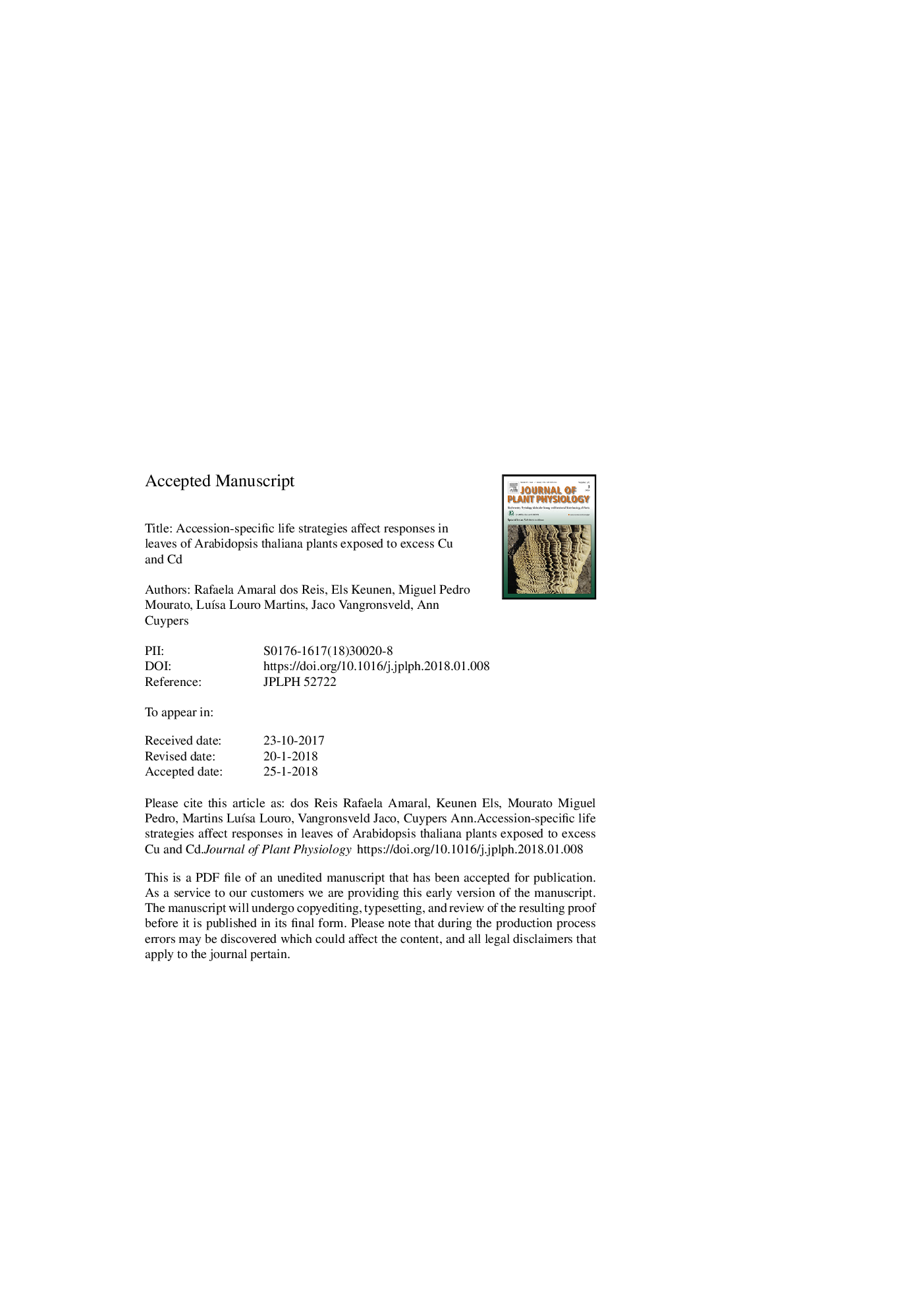| Article ID | Journal | Published Year | Pages | File Type |
|---|---|---|---|---|
| 8386876 | Journal of Plant Physiology | 2018 | 36 Pages |
Abstract
Our results suggest that different life strategies favored by both accessions under physiological conditions affect their response to metal exposure. While Col-0 plants mainly invest in metal detoxification, Ws plants center on nutrient homeostasis. In particular, the higher expression of genes related to Cu homeostasis genes in non-exposed conditions indicates that Ws plants possess a constitutively efficient metal homeostasis. On the other hand, oxidative stress-related MAPK signaling appears to be boosted in leaves of Col-0 plants exposed to excess Cu. Furthermore, the upregulation of the glutathione (GSH) biosynthesis GSH2 gene and the increased GSH concentration after Cd exposure suggest the activation of detoxification mechanisms, such as phytochelatin production, to counteract the more severe Cd-induced oxidative stress in leaves of Col-0 plants. Exposure to Cd also led to a more pronounced ethylene signaling response in leaves of Col-0 as compared to Ws plants, which could be related to Cd-induced GSH metabolism. In conclusion, accession-specific life strategies clearly affect the way in which leaves of A. thaliana plants cope with excess Cu and Cd.
Related Topics
Life Sciences
Agricultural and Biological Sciences
Agronomy and Crop Science
Authors
Rafaela Amaral dos Reis, Els Keunen, Miguel Pedro Mourato, LuÃsa Louro Martins, Jaco Vangronsveld, Ann Cuypers,
